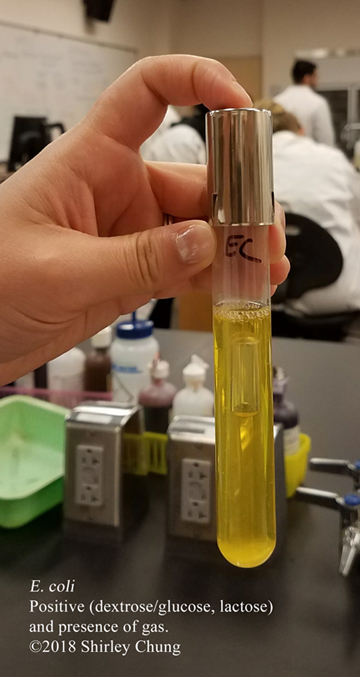Carbohydrates may be metabolized in many different ways: aerobically, anaerobically, both or neither.
In carbohydrate (or alcohols) fermentation, anaerobic dissimilation produces an organic acid (e.g. lactic, formic, acetic) with a gas (hydrogen or carbon dioxide) as a by-product. Facultative anaerobes are usually carbohydrate fermentors.
A carbohydrate fermentation medium involves: nutrient broth containing a specific type of carbohydrate (e.g. glucose, sucrose); Durham tube (inverted vial which can detect gas indicative of fermentative processes); phenol red (pH indicator) which is red at neutral pH 7 and yellow in an acidic environment such as pH 6.8.
Inoculated broth tubes should be observed in 48 hours. If carbohydrate fermentation occurs, tubes will change color to yellow (acidic) and a gas bubble may/may not be observed.
Clinical significance. Lactose fermentation helps to differentiate between enteric and non-enteric bacteria. Dextrose fermentation helps differentiate between Vibrio (+) and Pseudomonads species in septicemia after consumption of fish.
Reference
Cappuccino, J. G., & Welsh, C. (2018). Microbiology: A laboratory manual.

